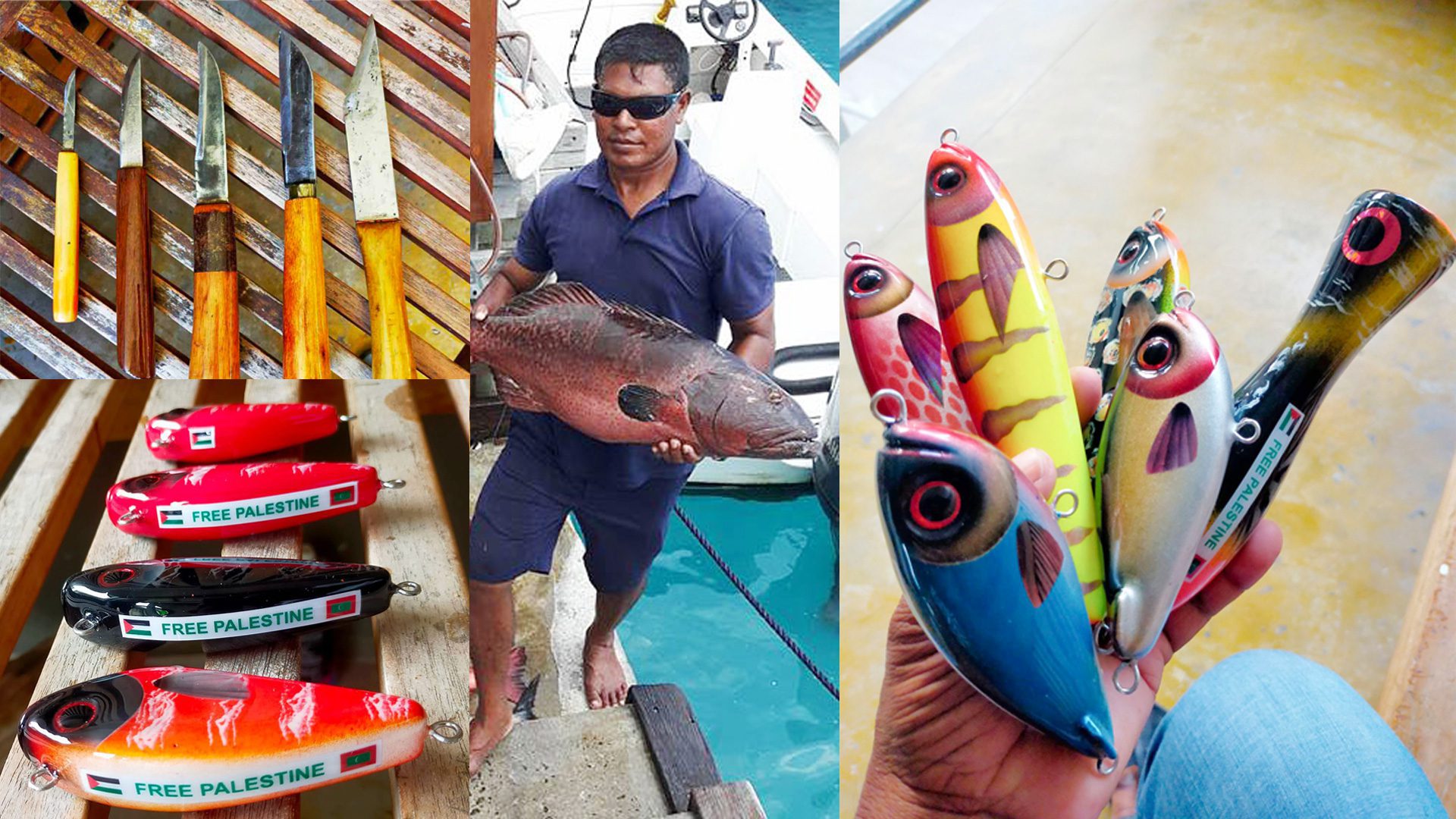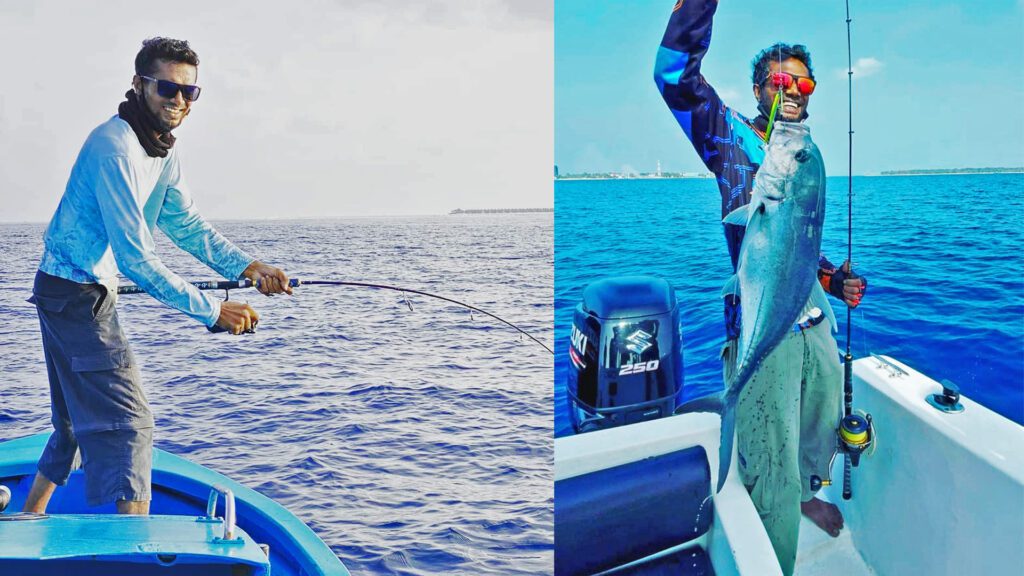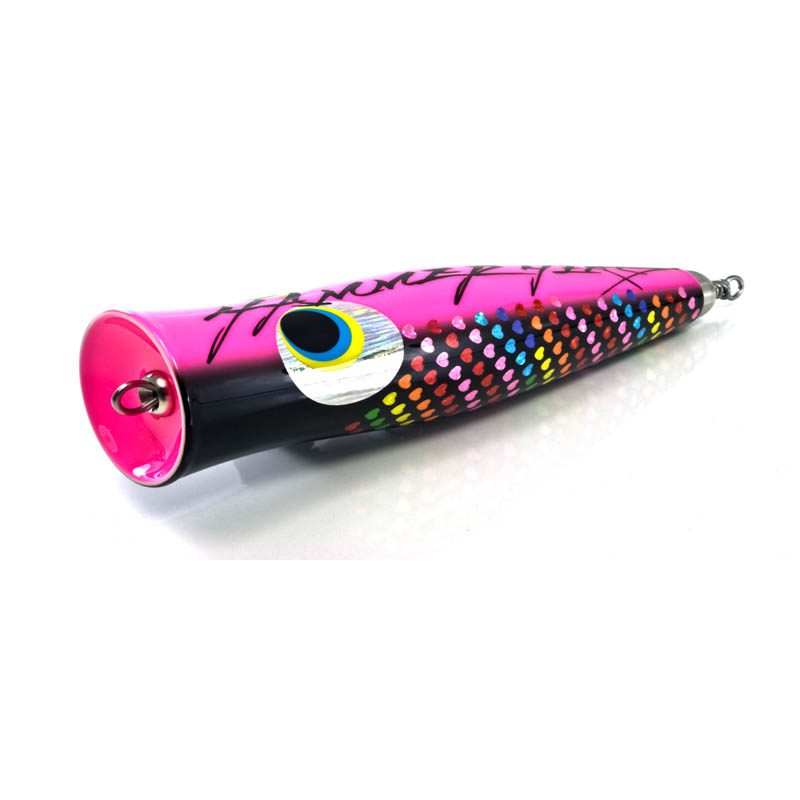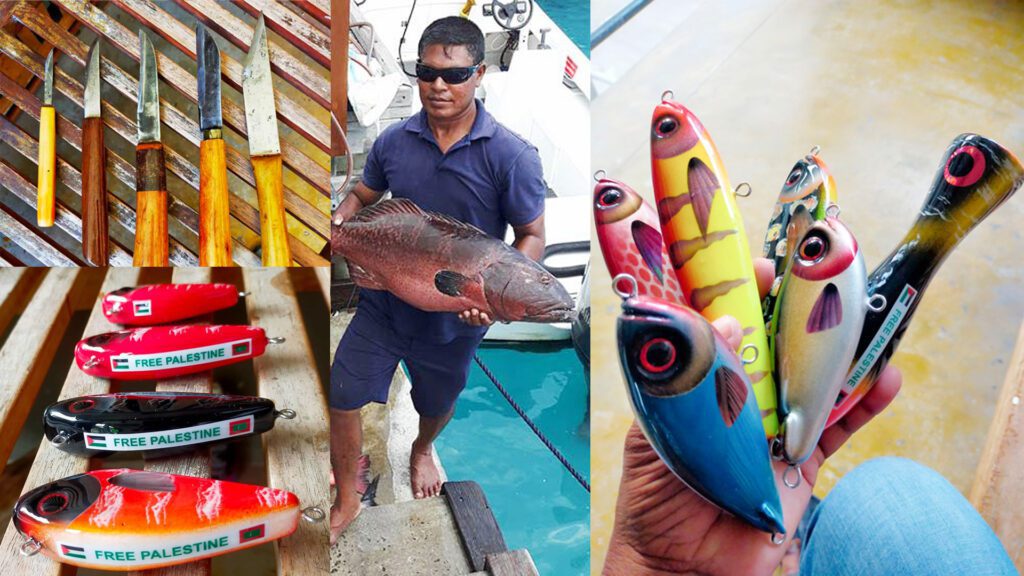
I remember in the early 90s, while we were in the capital island Male’, my uncle Badhuru Naseer (we call him Badhurube) took us to the beach, indulging in catching varieties of reef fish. During his spare time, he made small traditional dhonis, or fishing vessels, of around one to two feet in length.
The fishing enthusiast is now a master craftsman, inventing and transforming the most important ‘weapon’ in fishing. He is one of the most talented lure makers in Maldives. It is a satisfaction to catch a fish on a lure you’ve meticulously crafted yourself. The truth behind it is simple. You can customize it. This is a rewarding endeavor in creativity and resourcefulness.
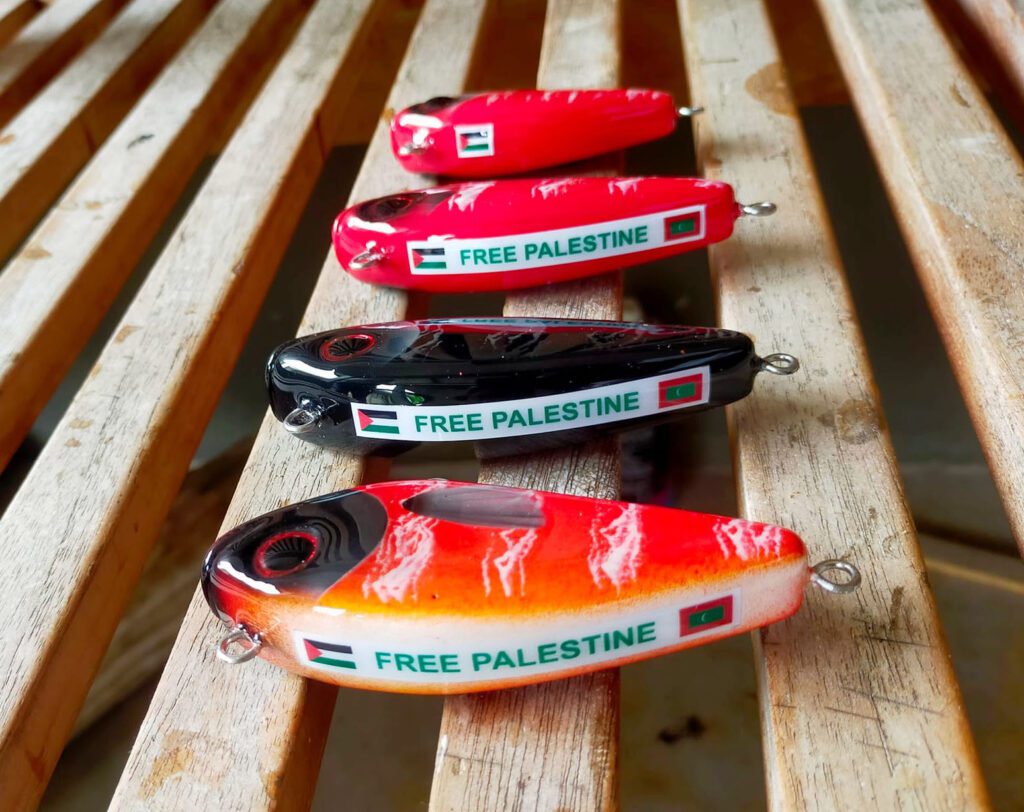
This story delves into the world of lure-making created by my uncle Badhurube. His knowledge and techniques enable him to create effective and personalized fishing lures, successfully landing some of the fiercest predators in the sea. The process of making a custom lure is not only an art but also a science that requires a blend of creativity, craftsmanship, and an understanding of fish behavior. Badhurube has developed a thorough understanding of this process, which involves specific materials, crafting techniques, and creativity. There is a lure for every possible fishing scenario. Making a successful lure needs precision equipment and tools, but he uses some basic tools to produce these first-class lures.
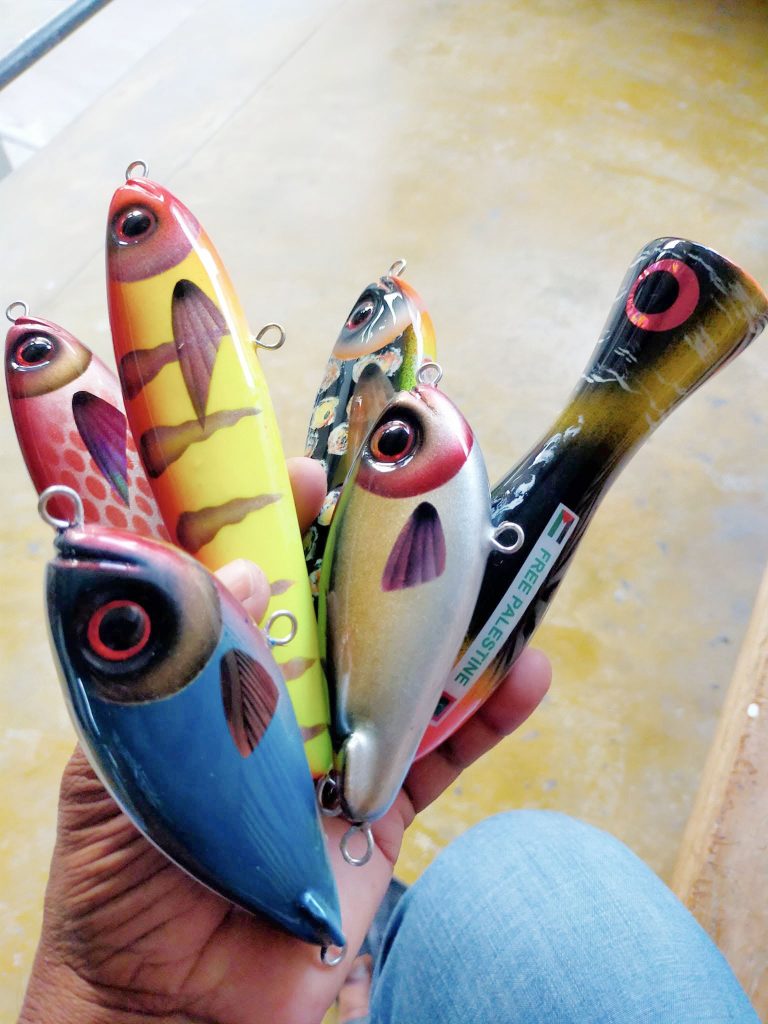
He uses wooden blocks to transform them into lures. The most difficult part of transforming a wooden block is the process of curving. Normally, people use carving tools like knives, chisels, and rasps for this process. However, he uses a hacksaw-blade-turned-knife that he has transformed as a main “multi-tool” for carving.
Basically, there are two ways he carries this out: using a lathe machine to transform the wooden blocks and his hacksaw-blade-turned-knife to curve the blocks to make lures. He also makes molds to make lures using fiber gel and epoxy. After transforming the blocks into the shape of a fish and when the final touches of curving, engraving, and polishing are over, he will install the steel wiring and lead sinks to adjust the buoyancy and sinking rate. Then he paints the lure. He will use an airbrush gun to create all the designs and patterns, followed by the application of epoxy and appropriate coats on the lure’s surface. The final process will also include the application of waterproof paints and clear coatings.
He always uses wood that offers natural buoyancy and a wide range of carving options. He will choose the appropriate hook size and style based on the target fish species and lure design. Fixing realistic plastic eyes is an intriguing process. It will attract and mimic the predators, as it mimics the eyes of baitfish. He carried out this daunting work using the simple knife for many years until he bought a lathe machine. He carried out this intricate work of sculpting wooden bodies to give the lure a unique shape and profile. And the delicate and artistic work of meticulously painting and finishing the lure achieves realistic patterns and colors—ultimately producing the finest fishing lures one could ever see in the world of fishing.
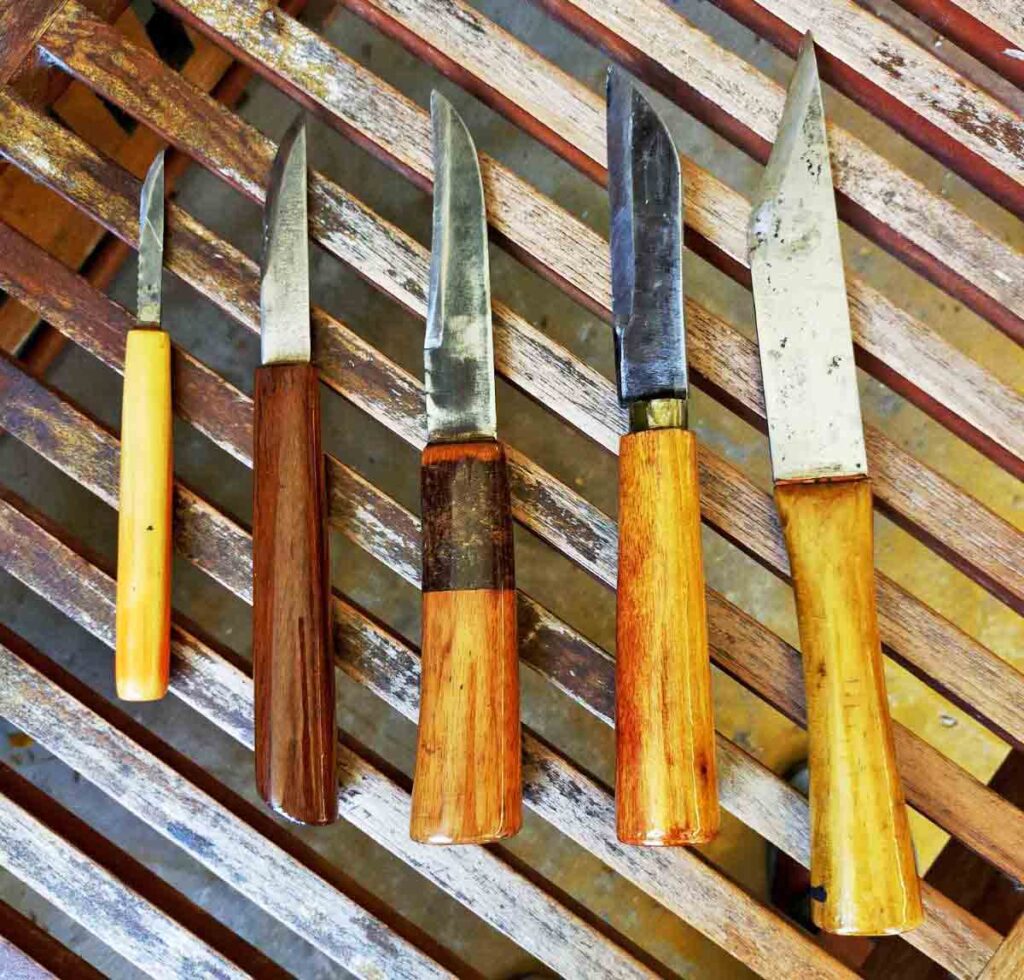
The way your lure moves through the water is crucial. He also experiments with different tail designs and weighting configurations to achieve an erratic, darting, or wobbling action that mimics real prey. This is a work that requires patience and dedication. Lure is his hobby. Badhurube, who crafts his own custom lures, finds fulfillment in the creative process and the thrill of seeing his creations in action. He creates stick baits, poppers, ‘birds,’ and swim baits.
